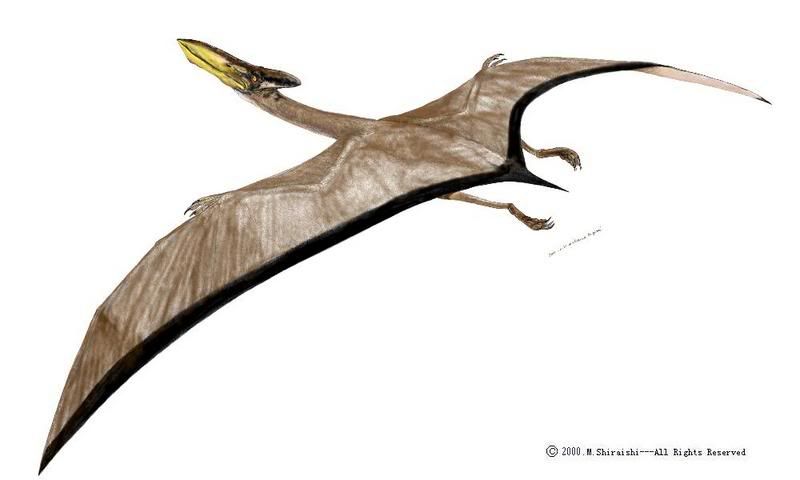Post by Barry the Baryonyx on Jun 25, 2007 23:42:59 GMT -5
Quetzalcoatlus Skybax

Pic by Dinosauricon
Quetzalcoatlus (named for the Aztec feathered serpent god Quetzalcoatl) was a pterodactyloid pterosaur known from the Late Cretaceous of North America (Campanian–Maastrichtian stages, 84–65 ma), and one of the largest known flying animals of all time. It was a member of the Azhdarchidae, a group of advanced toothless pterosaurs.
Discovery and species
The first Quetzalcoatlus fossil was found by Douglas A. Lawson. During the Cretaceous, Texas's climate was similar to modern tropical coastal wetlands and lagoons, extending
along the Cretaceous Seaway that filled the center of North America. Bones of related animals are also known from Dinosaur Provincial Park, Alberta, Canada. Skeletal remains of two species have been recovered from the Big Bend Region of Texas; the larger of the two (Q. northropi) had an estimated wingspan of up to 12 m (39 ft). There is still considerable debate as to the upper limit of Quetzalcoatlus wingspans. The largest remains, on display at the Science Museum of Minnesota, are somewhat scrappy, and may indicate an individual with a wingspan as large as 18 m (59 ft). Such a wingspan, however, may violate fundamental structural limits imposed on biological fliers; some scientists favor a wingspan closer to 12 m (40 ft) in light of these arguments. The largest Pteranodon individuals with 6 m (20 ft) wingspans were once thought to represent the size limit in biological fliers before the discovery of Quetzalcoatlus, so the matter is clearly still open.
Paleobiology
There are a number of different ideas about the lifestyle of Quetzalcoatlus. With its long neck vertebrae and long toothless jaws it might have fed on fish like a heron, or perhaps it scavenged like the Marabou Stork, others maintain that it fed like modern-day skimmers. Presumably Quetzalcoatlus could take off under its own power, but once aloft it may have spent much of its time soaring. On the ground, Quetzalcoatlus probably walked on all fours.
Along with the dinosaurs, Quetzalcoatlus became extinct at the end of the Cretaceous period.
Scientific classification
Kingdom: Animalia
Phylum: Chordata
Class: Sauropsida
Order: Pterosauria
Suborder: Pterodactyloidea
Family: Azhdarchidae
Genus: Quetzalcoatlus


 Is it just us?
Is it just us?